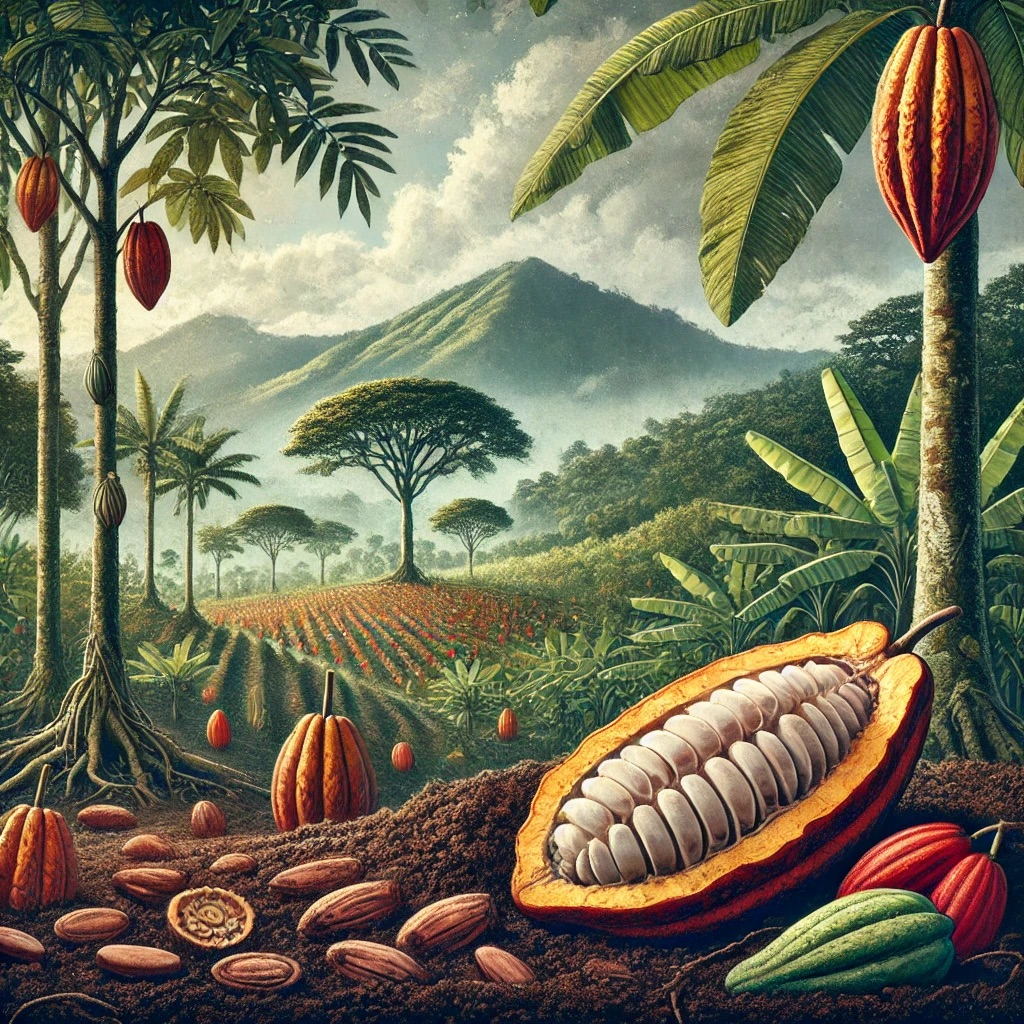A Deeper Look into the Influence of Soil, Climate, and Crops
When discussing the essence of fine chocolate, we often focus on the quality of cocoa beans, the expertise of the chocolatier, and the meticulous bean-to-bar process.
Yet, one of the most crucial elements shaping the final flavour of chocolate is terroir.
This concept, commonly associated with wine, is equally relevant to cocoa, offering a richer understanding of the chocolate we enjoy.
But what exactly is terroir, and how does it influence cocoa's flavour?
Let’s delve into this fascinating topic and clear up some common misconceptions along the way.
What is Terroir?
Terroir is a French term often used in the wine industry it refers to the unique combination of environmental factors—such as soil composition, climate, altitude, and microclimates—that contribute to the characteristics of a crop.
In the context of cocoa, terroir is the distinct fingerprint of the land, shaping the taste profile of the beans and giving chocolate its diversity and complexity.
Each cocoa-producing region has its own terroir, which results in unique flavour nuances that make chocolate from different origins so distinctive.
Soil Composition: The Foundation of Flavour
The soil in which cacao trees grow is one of the most influential aspects of terroir. The minerals, organic matter, and overall health of the soil directly impact the flavour of the cocoa beans.
For instance, the volcanic soils of Madagascar, rich in minerals, often lend the beans a bright, fruity, and tangy character.
Meanwhile, in Ecuador, the nutrient-rich, well-drained soils contribute to beans with complex, floral undertones and a more robust flavour profile.
Interestingly, there’s a common belief that if cocoa is grown near banana trees, it might take on a banana flavour.
While this isn't true, the idea stems from a kernel of truth: the same soil that gives bananas their unique taste can also influence the flavour of other crops, like cocoa.
This doesn’t mean the cocoa will taste like bananas, but the shared soil conditions can enhance the flavour profiles of both, making them richer and more complex.
.jpeg) Climate: The Role of Temperature and Rainfall
Climate: The Role of Temperature and Rainfall
Climate is another critical component of terroir. Cocoa trees thrive in hot, tropical climates with consistent rainfall, but variations in temperature, humidity, and precipitation can lead to distinct flavour profiles.
For example, regions with stable climates might produce cocoa beans with a consistent flavour, characterised by balanced acidity and sweetness.
In contrast, areas with pronounced seasonal variations can result in beans with a wider range of flavours, from intense bitterness to heightened fruity notes.
Altitude: Elevation and Flavour Complexity
Altitude also plays a significant role in cocoa’s flavour development. Beans grown at higher altitudes tend to develop more complex and nuanced flavours.
This is because the slower maturation process at higher elevations allows for a more extended period of flavour development.
For instance, cocoa beans from the Andes in Peru, grown at higher altitudes, are known for their distinctive, well-rounded flavours, often with floral and fruity notes.
Microclimates and Localised Conditions
Within broader climatic regions, microclimates—localised atmospheric conditions—can further influence cocoa flavour.
These microclimates can result in subtle differences in flavour even among beans harvested from the same region.
For example, cacao trees growing near rivers might benefit from higher humidity levels, enhancing the richness of the cocoa's flavour.
Similarly, trees shaded by taller vegetation might develop beans with less bitterness and more delicate, nuanced flavours.

The methods used to grow and harvest cocoa also interact with terroir to influence the final flavour.
Traditional farming practices, organic methods, and specific pruning or fertilisation techniques can all affect the taste of the beans.
Organic farming, for instance, often results in beans that express the purest characteristics of their terroir, allowing the natural flavours imparted by the soil and climate to shine through.
Post-Harvest Processing: Enhancing Terroir’s Impact
While terroir lays the foundation for flavour, post-harvest processing—such as fermentation, drying, and roasting—plays a crucial role in bringing out the best in the beans.
The fermentation process can introduce new flavour notes, such as fruity or spicy nuances, while drying methods impact the moisture content of the beans, affecting the flavour and texture of the final chocolate.
The roasting process, controlled by the chocolatier, can further enhance or alter the natural flavours, either highlighting the subtle notes created by terroir or introducing new dimensions of taste.
Exploring Cocoa Terroir
Understanding how terroir impacts cocoa can transform your appreciation of chocolate. Just as wine connoisseurs savour the nuances of different vineyards, chocolate lovers can explore the rich diversity of cocoa flavours by considering the terroir of various origins. Beans from regions like Ecuador, Madagascar, and Ghana each offer unique flavour profiles influenced by their specific environmental conditions.
Recognising the influence of terroir not only enhances our appreciation of chocolate but also celebrates the artistry involved in its creation.
Chocolatiers and bean-to-bar makers carefully select beans from specific regions to craft chocolates that reflect the rich diversity of global cocoa production.
By understanding and embracing terroir, they can create chocolates that truly embody the essence of their origins.
So, the next time you enjoy a piece of chocolate, take a moment to consider the terroir behind it.
It’s a testament to the intricate relationship between nature and flavour, and a reminder of the remarkable journey from bean to bar.
check out my other article about terroir here

